Facts About The Great Wall Of China
Facts about China presents Facts About The Great Wall Of China
The Great Wall Of China was also known as the “Long Wall” and was first built and reconstructed many times between the 6th Century BC and the 16th Century. It was created to help add protection to the north border of China and keep the invaders out from causing the collapse of the dynasties in rule at the time.
The Great Wall Of China Picture 1
The Great Wall Of China Picture 2
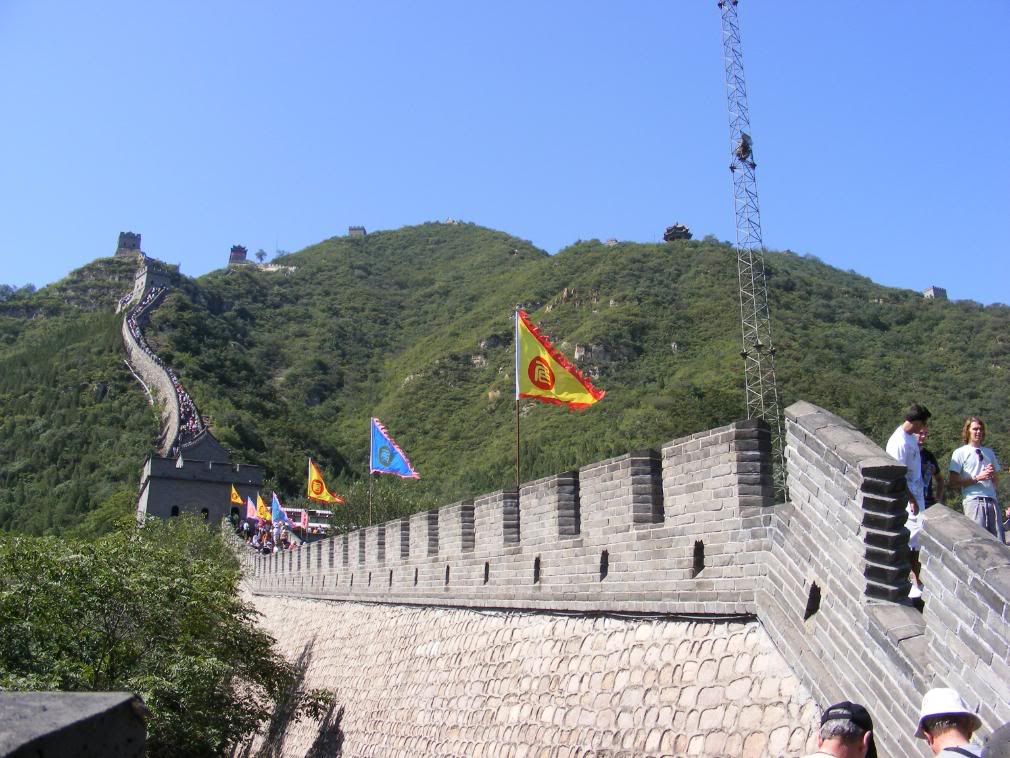
Facts about China: Facts About Beijing Olympics 2008
Facts about China presents Facts About Beijing Olympics 2008
The 2008 Summer Olympics will be held in Beijing China. This Olympics will be the 29th and will start on August 8th and continue till the closing on August 24th. The ceremonies and some events will be held in Beijing National Stadium. International football (soccer) horseback riding and sailing will be held in other places. The mascots for this Olympics correspond with the colors of the five circles in the Olympic rings. The slogan of “One World, One Dream” is also being used throughout the games. To prepare for the coming athletes and tourists, Beijing has made changes in the way the police will act in bad situations. The English translators are also being trained to be more thorough with their speaking abilities and their help to the foreigners coming in to the country for the games.
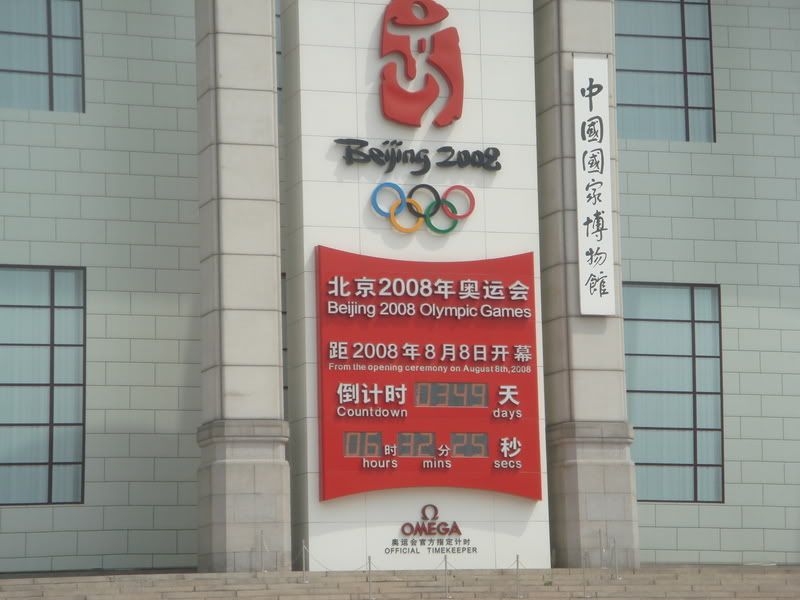
There are over 302 events taking place in the 28 sports. The sporting events for the Beijing Olympics for 2008 are: Archery, Badminton, Basketball, Canoeing, Diving, Fencing, Football/Soccer, Handball, Modern Pentathlon, Sailing, Softball, Synchronized Swimming, Taekwondo, Tennis, Volleyball, Weight Lifting, Athletics, Baseball, Boxing, Cycling, Equestrian, Field Hockey, Gymnastics, Judo, Rowing, Shooting, Swimming, Table Tennis, Triathlon, Water Polo, and Wrestling.

Facts about China: Accommodation in China
Facts about China presents Accommodation in China

Facts about China: Beijing Olympics 2008 China's Biggest Sport Stars
Facts about China presents Beijing Olympics 2008 China's Biggest Sport Stars
Beijing Olympics 2008 are still few month away but some sports experts already predict that China will for the first time in their history win the most medals in Olympic games! So, how are China's biggest sport stars being manufactured by so-called China's "sports factories?" How much fame and fortune can this amazing boys and girls enjoy in this communist country? And why are some great champions leaving their mother land to help athletes in other countries?
Facts about China: Hong Kong
Facts about China presents Hong Kong
Hong Kong is probably one of the most exciting cities in the world. What makes this city so vibrant and energetic is its nearly 7 Million residents and Hong Kong's unique mixture of Chinese and Western culture and this mix really makes Hong Kong special! Check this great video!
Facts about China: Free Tibet demonstrations against China in London
Facts about China presents Free Tibet demonstrations against China in London
Facts about China: Some Quick Facts About China
Facts about China presents Some Quick Facts About China
Did you know that the gold stars that appear on Chinese flag represent 5 major ethnic groups that live in China.
More than 70 percent of all toys produced in the world are coming from China
Flights between Beijing and Hong Kong are classified as international flights
China has more than 1.600 rivers
Chinese name for China is Zhongguo
China is the world's number 1 consumer of concrete
Muslim population in China is more than 30 millions
China has 34 births per minute
China produces 33% of the world's steel
More than 700 000 engineers graduate every year in China
There is only about 200 different family names in China
Chinese city Shanghai is the most populated city in the world
China won their first Winter Olympic gold medals in Salt Lake City
Paper originates from China
All the characters that appeared in Disney cartoons were banned in china for more than 50 years
More Facts about China soon!
Facts about China: Beijing Summer Olympics 2008 facilities
Facts about China presents Beijing Summer Olympics 2008 facilities
Beijing National Stadium will be the site of Athletics and Soccer. There will be also Opening and Closing Ceremonies. Unofficial "Birds nest" stadium will have a capacity of 100,000 seating places.  Beijing National Aquatics Center a.k.a. Water Cube, is located beside the Beijing National Stadium at Olympic Green. Aquatics sports such as swimming, diving, water polo and synchronized swimming will be held in this ultra modern hall. The capacity is 17,000 sitting places.
Beijing National Aquatics Center a.k.a. Water Cube, is located beside the Beijing National Stadium at Olympic Green. Aquatics sports such as swimming, diving, water polo and synchronized swimming will be held in this ultra modern hall. The capacity is 17,000 sitting places.
More about Beijing Summer Olympics 2008 facilities soon
Facts about China: The Silk Road
Facts about China presents The Silk Road
The Silk road was the ancient trade route which was established approximately. 60 B.C. that continued to be used for many, many centuries. Silk Road started in China and ended in western Europe.
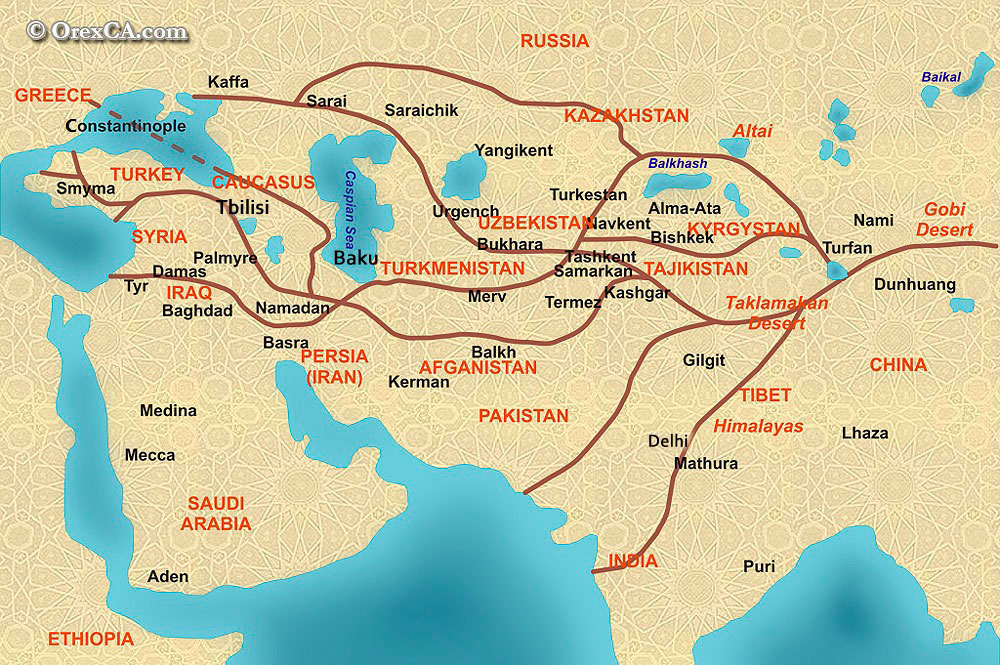 Marco Polo (1254–1324, born on Croatian island Korcula), who was a famous traveler, left his mark on the road.
Marco Polo (1254–1324, born on Croatian island Korcula), who was a famous traveler, left his mark on the road.
 In addition to silk products and some other goods, Chinese inventions such as the paper, compass, gunpowder and printing techniques, came to European territory. Meanwhile, Western music, the calendar, painting, astronomy and some other Western achievements entered China and became a part of the rich Chinese culture.
In addition to silk products and some other goods, Chinese inventions such as the paper, compass, gunpowder and printing techniques, came to European territory. Meanwhile, Western music, the calendar, painting, astronomy and some other Western achievements entered China and became a part of the rich Chinese culture.
More facts about China soon!
Short and Quick Facts about China
Quick facts about China
- China has 1.3 billion people, a little over 20 percent of the world’s population.
- The Chinese New Year is the first day of the lunar calendar based on thecycles of the moon. The date varies from year to year buttypically falls in January or February.
- The twelve animals in the Chinese zodiac are the rat, ox, tiger, rabbit, dragon, snake, horse, sheep, monkey, rooster, dog, and pig, with each year represented by one of the animals. A full Chinese zodiac is twelve years. A complete calendar cycle is sixty years.
- The money used in China is called renminbi, meaning the people’s currency. The basic unit is the yuan.
- The Great Wall can be seenby the human eye from outer space.
- Giant pandas are a national treasure in China. There areabout 1,600 pandas living in the wild today.
- The compass, paper, gunpowder and printing are called the Four Greatest Ancient Chinese Inventions. Other Chinese inventions include fireworks and ice cream.
- China is the homeland of tea, and its cultivation dates back two thousand years.
- Mount Qomolangma (also known as Mount Everest), the highest point in the world, is located
between China and Nepal.
- In China, a person’s family name comes first, followed by the first name. There is no middle name.
- The three most popular Chinese family names are Li, Zhang, and Wang.
- In ancient China, Chinese characters were written on animal bones, turtle shells, silk, or bamboo slices.
More facts about China tomorrow!
Facts about China: Chinese Panda
Today Facts about China presents, the cutest animal in China, Panda!Have you ever seen an animal similar to bear, but much more friendly looking? It's called Panda and if you are in China, you'd better not miss this chance to say hello this cute creature.
 Pandas in Chinese are called Xiong Mao, meaning "bear-cat", because it looks like a bear in shape and a cat in face. Panda actually is a member of the bear family. It has black furs on ears, nose, eyes patches and shoulders and the rest is white. A panda is about sixty inches long from nose to rump and with a short tail of about six inches. A big one weighs more than two hundred to four hundred pounds. Pandas eat bamboo only, so they have to live in certain places where large amount of bamboo can be found.
Pandas in Chinese are called Xiong Mao, meaning "bear-cat", because it looks like a bear in shape and a cat in face. Panda actually is a member of the bear family. It has black furs on ears, nose, eyes patches and shoulders and the rest is white. A panda is about sixty inches long from nose to rump and with a short tail of about six inches. A big one weighs more than two hundred to four hundred pounds. Pandas eat bamboo only, so they have to live in certain places where large amount of bamboo can be found.
 But pandas in the zoos eat some other things like rice porridge, apples, sweet potatoes and carrots.In recent years, bamboo flowers and then dies out, which happens once every one hundred years. Pandas will starve to death if they cannot find other bamboo forests before the one they live in dies. Today, there are only one thousand pandas in the wild and mostly in central China. It has been listed in the World Conversation Union's Red List of Threatened Animals, but it is still in danger. We need to do something more to help this rare and lovely animal
But pandas in the zoos eat some other things like rice porridge, apples, sweet potatoes and carrots.In recent years, bamboo flowers and then dies out, which happens once every one hundred years. Pandas will starve to death if they cannot find other bamboo forests before the one they live in dies. Today, there are only one thousand pandas in the wild and mostly in central China. It has been listed in the World Conversation Union's Red List of Threatened Animals, but it is still in danger. We need to do something more to help this rare and lovely animal
Facts about China will be back soon
Facts about China: Terracota soldiers - Pride of China
Facts about china presents Terracota soldiers - Pride of China
China's 2,000-year-old Terracotta Army was one of the greatest archaeological discoveries of the 20th century (1974 actually). These world-famous Terracotta Warriors are part of a vast underground necropolis for China’s first Emperor, Qin Shi Huangdi, that took 700,000 workers 36 years to create.
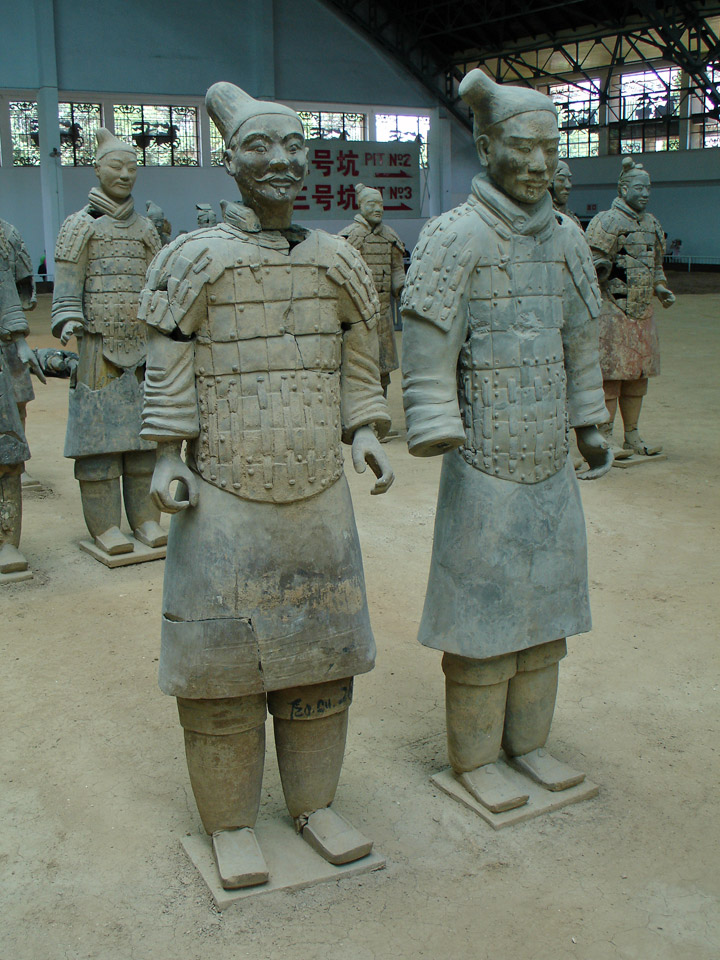 Myth says that in 206BC the first Emperor of Unified China, Ch'in ShiHuangdi, decreed that after his death his body would be clothed in jade and cast adrift in a lake of Mercury. The lake, within a pyramid, was to be protected by an everlasting army. Like Tutankhamun, in Egypt, lord Pacal, in Mexico and the Viracochas', of Peru Shi Huangdi taught the super-science of the sun and the higher orders of spirituality. They say that, after he died, he flew to the sun to live forever.In 1974, archaeologists actually discovered the first of more than 8,000 life-size terracotta warriors buried near the pyramid tomb of Ch'in Shi Huangdi, confirming that the legend was more than just a myth. But why were the massive soldiers, each weighing more than half a tone, buried there at all? Was it simply to guard the Emperor in the afterlife?Maybe one day we'll get the answers to this questions
Myth says that in 206BC the first Emperor of Unified China, Ch'in ShiHuangdi, decreed that after his death his body would be clothed in jade and cast adrift in a lake of Mercury. The lake, within a pyramid, was to be protected by an everlasting army. Like Tutankhamun, in Egypt, lord Pacal, in Mexico and the Viracochas', of Peru Shi Huangdi taught the super-science of the sun and the higher orders of spirituality. They say that, after he died, he flew to the sun to live forever.In 1974, archaeologists actually discovered the first of more than 8,000 life-size terracotta warriors buried near the pyramid tomb of Ch'in Shi Huangdi, confirming that the legend was more than just a myth. But why were the massive soldiers, each weighing more than half a tone, buried there at all? Was it simply to guard the Emperor in the afterlife?Maybe one day we'll get the answers to this questions 
more Facts about china soon
Facts about China: The Yangtze River
Facts about China presents The Yangtze River.
 Not only are five of China's largest cities (Shanghai, Wuhan, Chongqing, Chengdu and Nanjingon) or near the river, but the 1.8 million square km Yangtze River basin is also home to 1/3 of Chinas population (400 million).
Not only are five of China's largest cities (Shanghai, Wuhan, Chongqing, Chengdu and Nanjingon) or near the river, but the 1.8 million square km Yangtze River basin is also home to 1/3 of Chinas population (400 million).More facts about China soon!
Tibet - Chinese shame
Facts about China presents Tibet - Chinese shame
'Tibet is a human rights issue as well as a civil and political rights issue. But there's something else too - Tibet has a precious culture based on principles of wisdom and compassion. This culture addresses what we lack in the world today; a very real sense of inter-connectedness. We need to protect it for the Tibetan people, but also for ourselves and our children.'
Richard Gere, Chairman of the Board of the International Campaign for Tibet said
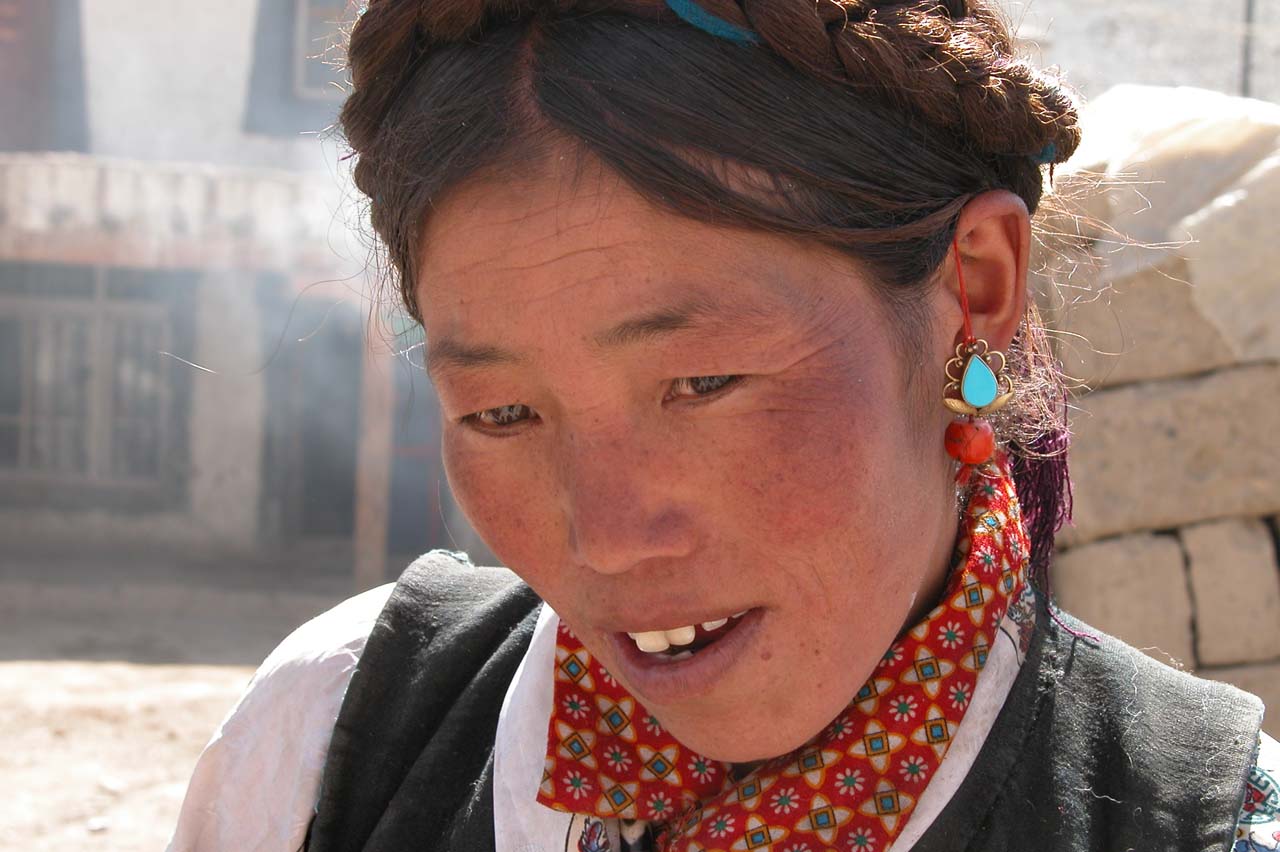
Tibet is important to China for strategic and economic reasons and because of the Communist Party's imperialist ambitions. In China today, it is a serious offence to say that Tibet is separate from China.
In March 1959, Tibetans rose up against the Chinese occupiers. The uprising was brutally crushed and the Tibetan leader, His Holiness the XIV Dalai Lama, escaped to India, followed by more than 80,000 Tibetans. Tens of thousands of Tibetans who remained were killed or imprisoned. Untold numbers, but at least hundreds of thousands, of Tibetans have died as a direct result of China's policies since 1949 - through starvation, torture and execution.
Facts about China: Beijing Olympic Game Facts and Figures
Facts about China presents Beijing Olympic Game Facts and Figures
280 billion yuan will be used to build 13 major Olympic stadium; 12 vertical traffic network of routs like Beijing-Chengde express way; morecity railways; and more subway. Also to be built is an Olympic Forest Park of 867 hectares with 200 hectare dragon-shaped lake area; 50 hectares of the Museum of Chinese Nation; 405 hectares of exhibition center and the Olympic Village. Around the 12-square meter central area of Olympic Games there will be 8 newly-fashioned tourism & leisure hotel; 3 golf courses, 5 luxury hotels, 8 shopping plaza, 4 food street, and 10 major shopping malls. All of them are sure to upgrade the Olympic Garden area to the most convenient and high class living community.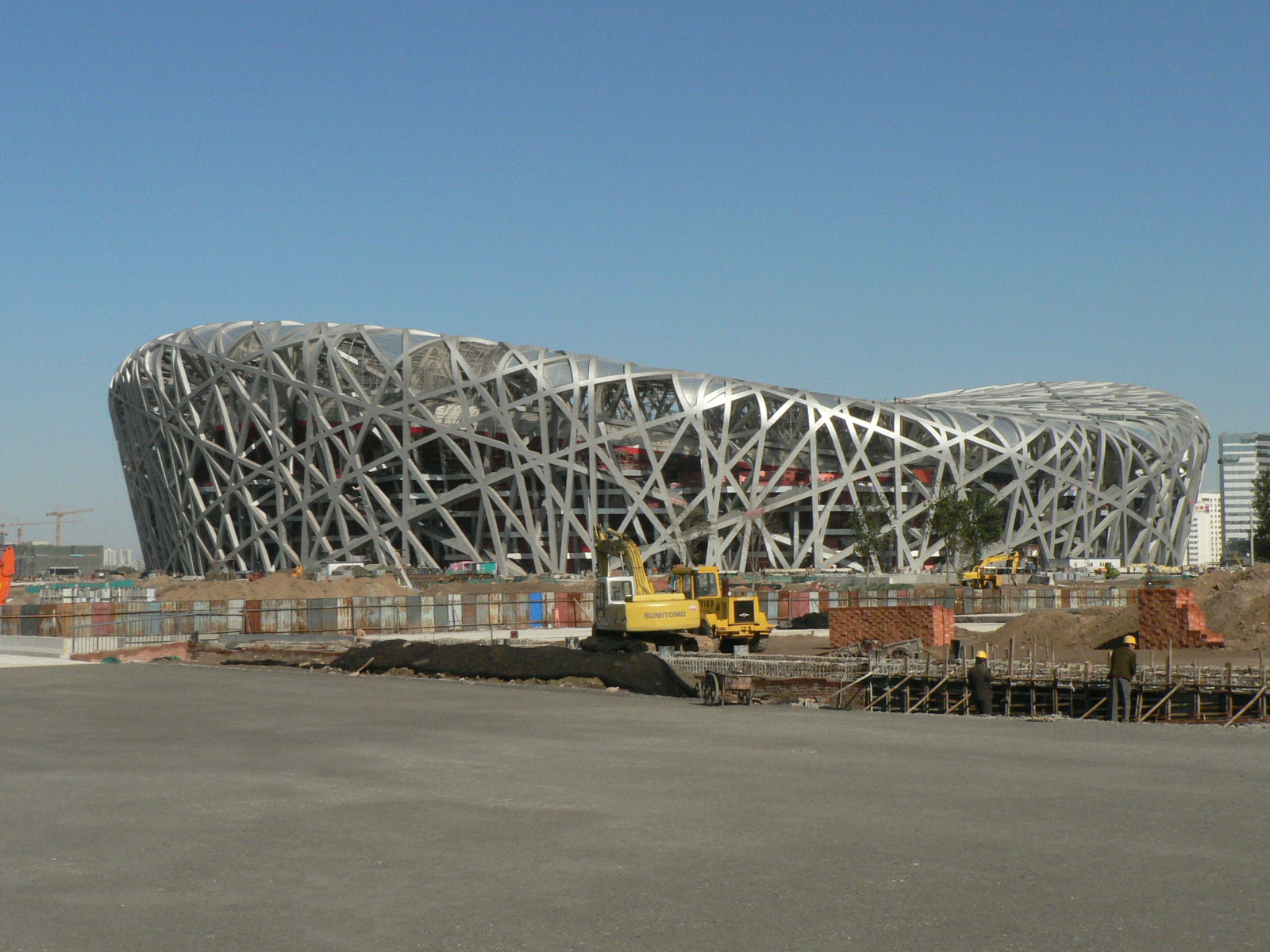 Among the 13 major Olympic stadiums scattered in the central area, there are 5 newly-built permanent stadiums: National Stadiums, National Gymnasium, National Swimming Center, National Tennis Center. 3 re-built stadiums such as Olympic Central Stadium, Olympic Central Gymnasium, Yingdong Swimming Gymnasium. All the sport amenities will be open to the public, except 5 temporary gymnasiums. This area will surely become the biggest sport facilities in Beijing.
Among the 13 major Olympic stadiums scattered in the central area, there are 5 newly-built permanent stadiums: National Stadiums, National Gymnasium, National Swimming Center, National Tennis Center. 3 re-built stadiums such as Olympic Central Stadium, Olympic Central Gymnasium, Yingdong Swimming Gymnasium. All the sport amenities will be open to the public, except 5 temporary gymnasiums. This area will surely become the biggest sport facilities in Beijing.
 Olympic Village is a place where the Olympic athletes live. Beijing municipal government invested 280 billion yuan in the 18 hectare Olympic Village. This area is designed so the athletes can enjoy the best amenities the host city can offer them. These amenities includes new parks, fresh air, smooth traffic, and a comfortable living environment. All of these amenities increases the real estate value of the surrounding area. According to the experts, they estimate the real estate price in the area will increase by 30%.
Olympic Village is a place where the Olympic athletes live. Beijing municipal government invested 280 billion yuan in the 18 hectare Olympic Village. This area is designed so the athletes can enjoy the best amenities the host city can offer them. These amenities includes new parks, fresh air, smooth traffic, and a comfortable living environment. All of these amenities increases the real estate value of the surrounding area. According to the experts, they estimate the real estate price in the area will increase by 30%.Facts about China: The Forbidden City
Facts about China presents The Forbidden City
The Forbidden City or Forbidden Palace, located at the exact center of the ancient city of Beijing, was the imperial palace during the mid-Ming and the Qing dynasties. Nowdays also known as the Palace Museum, its extensive grounds cover 720,000 square meters, 800 buildings and more than 8,000 rooms.The complex is divided into a northern and southern part. The southern area is where the emperor would hold ceremonies and entertain guests. The northern half was kept completely private residence accessible only to the select circles of the emperor. Today, the Forbidden City is one of the world's biggest tourist attractions and lately becoming ever more popular with film crews who pay a hefty price to film Chinese period pieces.
more facts about china soon
Facts about China: Chinese food
Chinese food
Westerners are usually amazed or dismayed at the food they found on the table for them to eat, whether it be 1000-year eggs or pickled duck feet to chicken with peanuts. Not surprisingly, the Chinese don't have any foods they consider to be not eaten.
In spite of their unique varieties of food, most of the foods can also be found in the West. The main difference is that the cooking habits of the Chinese and Westerners are so different. The Chinese tend to combine certain flavors and with ingredients that are specially seasoned with specific sauces or spices.
The cuisine in China differs from region to region, but with major differences found between the north and the south. The spiciest cuisine in China is that found in Sichuan cooking. They tend to use garlic and pepper in allmost all of their dishes, while Cantonese cooking has less oil and spices in their vegetable, fish and seafood dishes. Beijing and Shandong cooking tends to use more cereal products (noodles, and pastry pouches either steamed or boiled) and use simple ingredients with spices and chili.
More facts about China soon...








